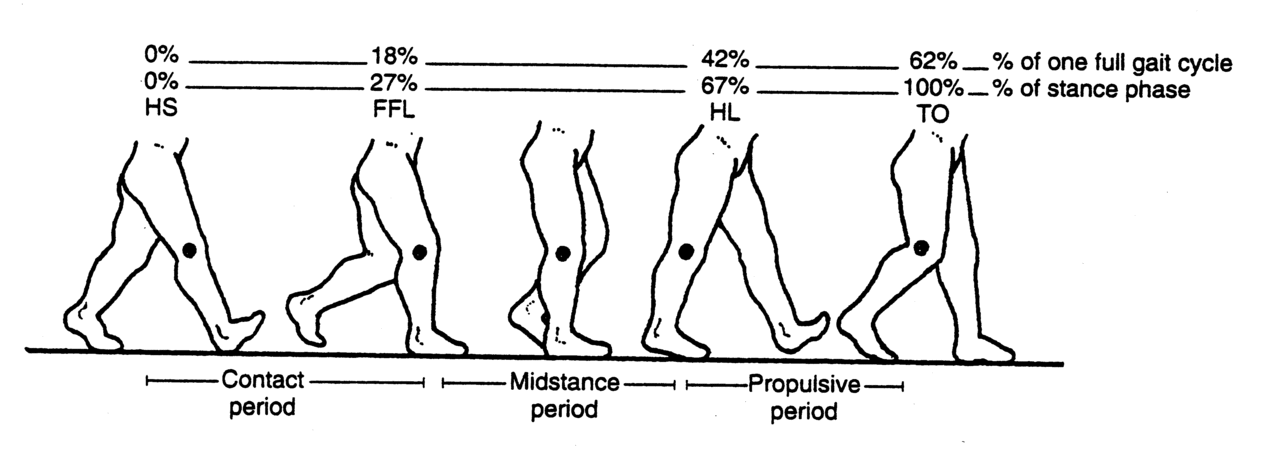Gait Cycle Basics: Part 2
Gait Cycle components
Let’s begin today with a typical walking gait cycle.
There are 2 phases: stance and swing. It comprises approximately 62% of the gait cycle. Inman and Scranton use the following classification:
Heel strike: when the heel hits the ground
Full forefoot load: weight is transferred anteriorly to the forefoot
Heel lift: when the heel begins lifting off the ground
Toe off: the beginning of propulsion
They further divide this into a contact period (heel strike to full forefoot load), a midstance period (from full forefoot load to heel lift) and a propulsive period (from heel lift through toe off)
Jaqueline Perry, the Matriarch of gait, uses a slightly more descriptive classification which we prefer:
Initial contact: when the foot 1st touches the floor
Loading response: weight bearing on the loaded extremity from initial contact and continues until the opposite foot is lifted for swing
Midstance: the 1st ½ of single limb support, beginning when the opposite foot is lifted until weight is over the forefoot
Terminal stance: begins with heel rise and continues until the opposite foot strikes the ground
Pre swing: when initial contact of the opposite extremity begins and toes off ends
She also describes 3 tasks to be performed during a gait cycle: weight acceptance (the limb is able to bear weight), single limb support (when weight is supported by one limb with the other in swing phase), and swing limb advancement (moving the opposite limb through space to become the next stance phase leg.
The question is, how do we adequately progress over the stance phase leg? Stay tuned to our next post for a primer on the 3 rockers….
The Gait Guys…Promoting gait literacy and understanding for the clinician and the consumer.

















